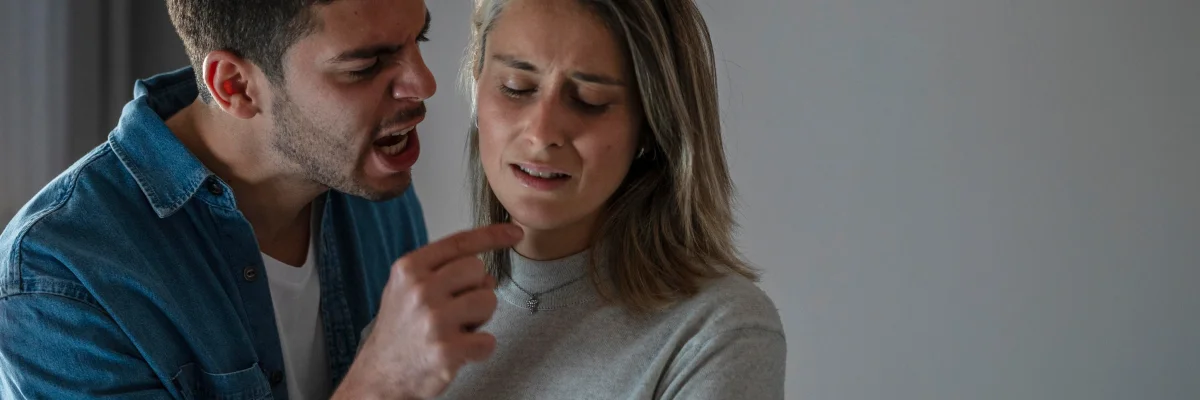
How to Get Out of an Abusive Relationship – Tips & Tricks
Our comprehensive guide provides invaluable insights into the multifaceted journey of how to leave an abusive relationship and construct a healthier future. Delving into the crucial steps of recognizing abuse, offering guidance on how to deal with abuse, making the decision to leave, and implementing security measures, we emphasize the importance of seeking support from trusted individuals and professionals, including organizations dedicated to abused help. You will explore strategies for healing and recovery, understanding the significance of ongoing self-care and professional support, tailored to the specific experiences of those who have endured abusive relationships. You will find out the importance of continuous self-care and support, coupled with access to resources for leaving an abusive relationship, as well as understanding what constitutes an abusive relationship, is highlighted as the foundation for positive growth and sustained emotional health.
Recognizing That You’re in an Abusive Relationship

Recognizing the signs of an abusive relationship, including understanding what is an abusive relationship, is the crucial first step toward regaining control of your life. Abuse can manifest in various forms—physical, emotional, or psychological—and it’s essential to be aware of the red flags associated with each. These may include:
| Physical Abuse | Unexplained injuries or frequent injuries with inconsistent explanations. Isolation from friends and family. Fearful behavior around the partner. |
| Emotional/Psychological Abuse | Constant criticism and humiliation. Control over daily activities, finances, or communication. Feelings of worthlessness or excessive self-blame. |
| Verbal Abuse | Name-calling, insults, or yelling. Manipulative language designed to undermine self-esteem. Threats and intimidation. |
| Isolation | Controlling access to friends, family, or outside support. Creating dependence on the abuser for emotional or financial needs. Limiting personal freedom and autonomy. |
Making the Decision to Leave an Abusive Relationship

Deciding to leave an abusive relationship is a pivotal and challenging step in the journey toward healing and self-preservation. Understanding how to get out of an abusive relationship involves a deep internal reckoning with the reality of the situation. It requires:
- acknowledging the toxicity of the relationship
- recognizing the detrimental impact on one’s well-being
- realizing the inherent value of personal safety and happiness.
Making this decision often involves seeking support from trusted friends, family, or professionals who can provide guidance and validation. Embracing the strength to take control of one’s life is a courageous choice, and it marks the beginning of a path toward recovery and a future free from the chains of abuse.
Tips For Security Planning

Seeking Support
When preparing to leave abusive relationships, seeking support is crucial for both emotional reassurance and practical assistance. Reach out to friends, family, or support groups who can offer understanding and empathy. Share your plans discreetly with someone you trust, and establish a communication system to ensure your safety during the transition. Professional assistance from counselors or therapists can provide additional guidance, helping you navigate the emotional challenges that may arise during this process.
Legal and Financial Preparation
Consulting with legal professionals is a vital aspect of your security plan. Understand your rights and explore legal avenues, such as obtaining restraining orders or filing for custody if necessary. Establish financial independence by opening a separate bank account and securing necessary funds. Consider consulting with a financial advisor to plan for the financial aspects of your transition. Having a clear understanding of the legal and financial aspects of leaving an abusive relationship empowers you to make informed decisions that prioritize your safety and well-being.
Protecting Privacy and Safety
As you are leaving abusive relationship, take measures to protect your privacy and ensure your safety. Change locks on doors, consider relocating if possible, and update passwords for your accounts. Be cautious about using electronic devices, as abusers may attempt to monitor your communications. Document incidents of abuse and keep a record of threatening messages or actions. Inform your workplace and children’s school about the situation discreetly, ensuring they are aware of any potential security concerns.
If you stay
If circumstances necessitate temporary or prolonged cohabitation with the abusive partner, it’s crucial to prioritize your safety while planning your exit. Establish a safe space within your home, communicate with trusted friends or family about your situation, and have a bag with essentials ready for a quick departure if needed. Utilize code words or signals with your support network to discreetly communicate when you’re in danger. Consider involving local law enforcement, obtaining a restraining order, or seeking assistance from domestic violence hotlines to ensure additional layers of protection.
Steps for Ensuring Continued Safety

Strategies for Healing and Recovery
After successfully leaving an abusive relationship, prioritizing your mental and emotional well-being, especially if you had an abusive husband, is crucial for sustained recovery. Seek professional help from therapists or support groups specializing in trauma and abuse. Establish a routine that promotes self-care, including activities that bring joy and relaxation. Consider participating in counseling or therapy sessions to address the emotional aftermath of abuse and develop coping mechanisms for the challenges ahead. Remember that healing is a gradual process, and reaching out for support can make a significant difference in rebuilding your life.
Rebuilding Self-Esteem and Trust
The process of rebuilding self-esteem and trust after an abusive relationship is a gradual but empowering process, especially for abused women who have experienced the devastating effects of relationships with abusive men.
- Surround yourself with a supportive network of friends and family who lift you up and encourage you.
- Engage in activities that build positive self-esteem, whether it’s a hobby, setting personal goals, or practicing self-compassion.
- Understanding that healing takes time, and seeking professional support can provide valuable information about restoring your sense of self-worth and developing healthy relationships in the future.
- Be patient with yourself, celebrate small victories and focus on personal growth.
Continuous self-care and ongoing support from professionals and loved ones, tailored to the specific experiences of abused women, will contribute to your sustainable well-being and help you build a brighter, healthier future.
Building a New Relationships

Embracing Newfound Freedom and Independence
As you embark on the journey of building new relationships after leaving an abusive relationship, whether it was with an abusive boyfriend, cherish the opportunity to embrace the newfound freedom and independence that comes with reclaiming your life. Dedicate time to rediscover your interests, passions, and goals, relishing in the joy of self-discovery. Celebrate your autonomy by making choices that align with your values and contribute to your personal growth. This intentional period of self-exploration serves as the bedrock for cultivating healthier connections as you move forward on your journey of healing and building fulfilling relationships.
Tips for Forming Healthy Relationships in the Future
In the process of forming new relationships and healing from an abusive relationship, place a premium on qualities like respect, communication, and trust.
- Share aspects of your past experiences openly, without feeling compelled to divulge every detail.
- Seek partners who not only embrace your journey but actively support your growth and well-being.
- Set clear boundaries and engage in open communication about expectations.
- Understand that healthy relationships are characterized by mutual respect, shared values, and the freedom to express yourself authentically without fear of judgment or control.
This intentional approach not only fosters a nurturing environment for personal growth but also contributes to the foundation of a fulfilling and healthy connection.
Importance of Ongoing Self-Care and Support
Continuing to prioritize self-care and seeking abusive relationship help is paramount as you navigate new relationships. Consistently check in with yourself, actively assessing your emotional well-being. Persist in seeking professional help, such as therapy or counseling, to address any lingering trauma or insecurities. Cultivate a supportive network of friends and family who comprehend the significance of your healing process. Make a deliberate effort to prioritize self-care activities that bring joy and relaxation, fortifying your ability to stay centered and resilient in the face of new challenges. This ongoing commitment to your well-being, coupled with access to abusive relationship help, lays a solid foundation for positive growth and sustained emotional health in your evolving journey.
Conclusion
In the journey of leaving an abusive relationship and building a healthier future, which requires courage, self-reflection, and ongoing support, recognizing abuse, deciding to leave, and implementing security measures are crucial for reclaiming control and ensuring safety. Seeking support from trusted individuals, professionals, and organizations dedicated to abused help is vital throughout this challenging process. After leaving, the focus on healing is paramount, especially when recovering from an abusive relationship. Building new relationships presents opportunities for growth. Embracing newfound freedom, intentionally cultivating healthy connections, and prioritizing respect and communication set the stage for fulfilling relationships. Ongoing self-care and support, including access to abused help resources, contribute to sustained emotional health. The resilience demonstrated throughout this transformative process underscores the potential for positive growth and personal empowerment in the aftermath of leaving an abusive relationship.
FAQs
How can I recognize if I am in an abusive relationship?
The guide delves into the signs of an abusive relationship, helping you recognize the red flags associated with physical, emotional, and psychological abuse. It provides insight into behaviors such as isolation, control, threats, and manipulation. Understanding what an abusive relationship is crucial for taking the first step toward regaining control of your life.
What steps are involved in making the decision to leave an abusive relationship?
Making the decision to leave is a pivotal and challenging step in the journey toward healing. The guide outlines the internal reckoning required, including acknowledging the toxicity of the relationship, recognizing its detrimental impact on your well-being, and realizing the inherent value of personal safety and happiness. Seeking support from trusted friends, family, or professionals is also discussed.
How can I ensure my safety while planning to leave an abusive relationship?
The guide provides practical tips for security planning, covering aspects such as seeking emotional and practical support, legal and financial preparation, protecting privacy and safety, and measures to take if circumstances require temporary or prolonged cohabitation with the abusive partner.
What steps are recommended for ensuring continued safety after leaving an abusive relationship?
After successfully leaving, the guide emphasizes the importance of prioritizing mental and emotional well-being, rebuilding self-esteem and trust, and engaging in activities that promote self-care. It also provides insights into forming healthy relationships in the future, with a focus on embracing newfound freedom and independence, setting boundaries, and fostering open communication.
What resources are available for ongoing support and assistance after leaving an abusive relationship?
The guide recognizes the importance of continuous self-care and support in the aftermath of leaving an abusive relationship. It highlights the significance of seeking professional help, such as therapy or counseling, and cultivating a supportive network of friends and family.











